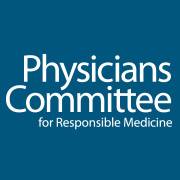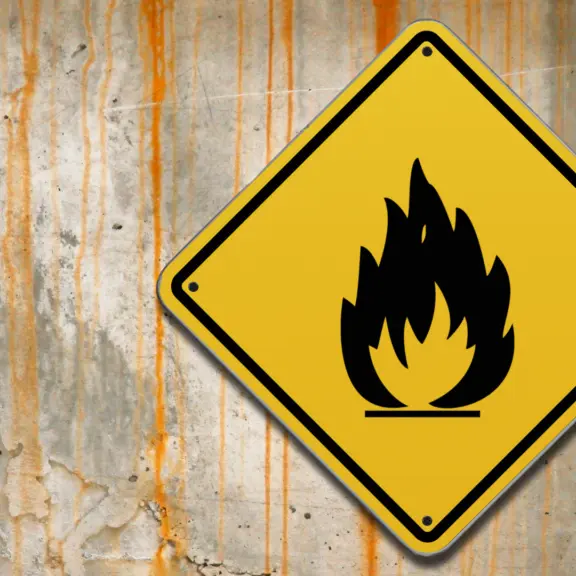
BEYOND PESTICIDES
Protecting health and the environment through science, policy, and action! #Nonprofit Beyond Pesticides is a 501(c)3 nonprofit organization headquartered in Washington, D.C., which works with allies in protecting public health and the environment to lead the transition to a world free of toxic pesticides. The founders felt that without the existence of such an organized, national network, local, state, and national pesticide policy would become, under chemical industry pressure, increasingly unresponsive to public health and environmental concerns. Beyond Pesticides seeks to protect healthy air, water, land, and food for ourselves and future generations. By forging ties with governments, nonprofits, and people who rely on these natural resources, we reduce the need for unnecessary pesticide use and protect public health and the environment.

Founded
1985
48000
Web
Sign in to see organisation website
Traffic
140336
Home X CLOSEMAIN MENU DAILY NEWS BLOG More News TAKE ACTION More Ways to Take Action What You Can Do Sign Up for Updates Action of the Week Weekly Updates Parks for a Sustainable Future Share Your Art Submit News Studies and Stories What We Do Tools for Change Community and Activist Support Pesticides and You Our Journal Resources Helping People Make Informed Decisions Keeping Organic Strong in 2024. Featured Resources Pesticide Gateway Research current and historical information on pesticide hazards and safe pest management. Be Part of the Organic Solution. Help us continue to raise the alarm about the climate crisis biodiversity decline and health challenges and promote the solution organic agriculture and land management.
From Social media
News about from their social media (Facebook and X).
Daily News: Fire Hazards and Toxic Combustion of Herbicide Products Increase Threats to Health and Environment An assessment of the fire hazards of herbicide products finds high fire and toxic gas emission risk, particularly in 2,4-D-based weed killer products. [Researchers analyzed four commercially available products containing two of the most commonly used active ingredients, glyphosate and 2,4-D. ] Centralny Instytut Ochrony Pracy - Państwowy Instytut Badawczy The authors note, “Inert [nondisclosed] ingredients significantly influence flammability and toxic gas generation in fires,” and the combustion of these products “releases hazardous gases and polycyclic aromatic hydrocarbons.
Like Comment
Daily News: Golf Courses Linked to Parkinson’s Disease and Pesticide Use A recent study published by medical professionals in the Journal of the American Medical Association (JAMA) finds that “living within 1 mile of a golf course was associated with 126% increased odds of developing PD [Parkinson’s Disease] compared with individuals living more than 6 miles away from a golf course. ” ⛳ [University of Rochester Medical Center; University of Kansas Medical Center; Barrow Neurological Institute; Mayo Clinic] [The authors reference numerous studies with evidence that various commonly used golf course pesticides leach into groundwater, which is a source of drinking water. ] While organic land management offers a simple solution, current pesticide restrictions do not address chronic neurological diseases such as Parkinson’s Disease, which are linked to pesticide exposure.
Like Comment
Data about organisation
Washington
Organisations from BEYOND PESTICIDES

It's time to restore balance to the courts.

656. Demand Justice Initiative
It's time to restore balance to the courts.

Protecting health and the environment through science, policy, and action.

658. ASSOCIATION OF NURSES IN AIDS CARE
COCA is with the CDC Emergency Risk Communication Branch.

659. ASSOCIATION OF NURSES IN AIDS CARE
COCA is with the CDC Emergency Risk Communication Branch.
Similar organisations
Similar organisations to BEYOND PESTICIDES based on mission, location, activites.

We develop leaders of color so the environmental movement reflects the communities most impacted by climate change.

The Advocacy Project helps marginalized communities tell their story, claim their rights and produce social change.

Physicians Committee for Responsible Medicine
Helping humans and animals through plant-based diets and ethical and effective scientific research.
Similar Organisations Worldwide
Organisations in the world similar to BEYOND PESTICIDES.

THE SOIL ASSOCIATION LIMITED (uk)
Soil Association is the charity that digs deeper to transform the way we eat, farm and care for our natural world.

THE SOIL ASSOCIATION LIMITED (uk)
Soil Association is the charity that digs deeper to transform the way we eat, farm and care for our natural world.

PESTICIDE ACTION NETWORK UK (uk)
PAN UK is the only UK charity focused solely on global pesticide issues.

PROGRESSIVE FARMING TRUST LIMITED (uk)
For Organic Principles and Best Practice.

Far East Victoria Landcare Inc (au)
Far East Victoria Landcare is a grassroots community Network that supports 7 Landcare Groups and an Sustainable Agriculture group in Far East Gippsland Vic.
Interesting nearby
Interesting organisations close by to residence of BEYOND PESTICIDES

Dedicated to alleviating animal suffering caused by people since 1951.

Great art.

Protecting health and the environment through science, policy, and action.

National Black Women's Health Project, (DBA Black Women's Health Imperative)
The only national organization devoted solely to advancing the health and wellness of America's 22 m.
Similar social media (48000)
Organisations with similar social media impact to BEYOND PESTICIDES

28062. Aurora Health Care Foundation Inc
Aurora Health Care is proud to be a part of Advocate Health.

28063. Downtown Bentonville Inc
Enhancing the Downtown Bentonville experience for everyone.

Protecting health and the environment through science, policy, and action.

Compass Health Network is a nonprofit health care organization that provides a full continuum of care.

28066. Wellesley College Alumnae Association
Educating barrier-breaking, paradigm-shifting, world-changing leaders past, present & future.
Similar traffic
Organisations with similar web traffic to BEYOND PESTICIDES

92947. Conagra Brands Foundation
This official Facebook page of Conagra Brands.

Protecting health and the environment through science, policy, and action.
Join us and make a difference for the future!
Sign Up
Please fill in your information. Everything is free, we might contact you with updates (but cancel any time!)
Sign in with GoogleOr
Good News
"Excited to see how communities can thrive with positive changes! Local initiatives like Dallas' Nighttime Entertainment Strike Team are great examples of how creative minds work to uplift our cities. Let’s keep supporting those who strive for vibrant urban culture! 🌟 #GoodNews #Community"
Wilonsky: Dallas' Nighttime Entertainment Strike Team is why we can't have nice things
The Dallas Morning News
Like Comment"Thrilled to see Chappell Roan launch the Midwest Princess Fund for Trans Youth, already raising $400K! 💖✨ It's inspiring to witness artists using their platforms for such a meaningful cause. Let's support our communities and uplift every voice! 🌈 #LGBTQ #TransYouth #GoodNews"
Chappell Roan Unveils Midwest Princess Fund for Trans Youth -- and She's Already Raised $400K
Billboard
Like Comment










